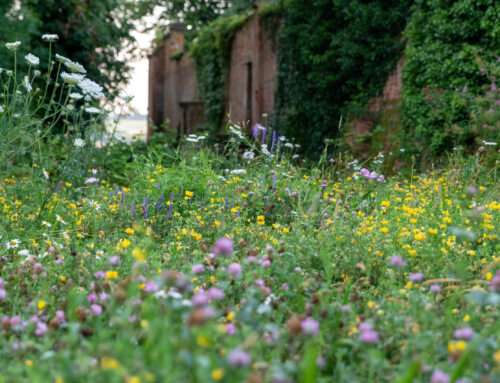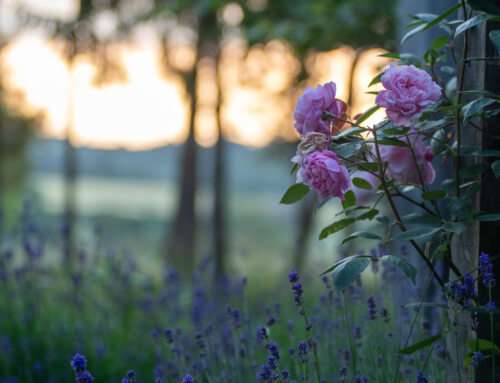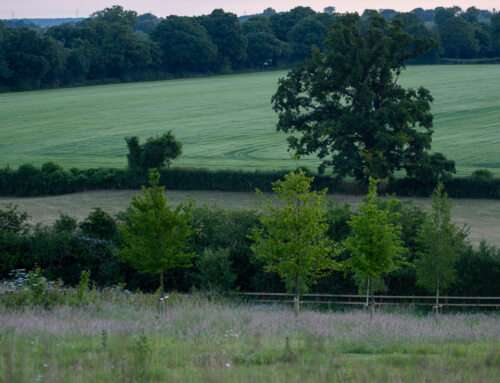Saxon Hedging Mix
It’s nearly a year since we lost my father-in-law, Roderick Nicholson, founder of Nicholsons. He may not be with us any longer but he left a wealth of ‘Roderickisms’; concepts, ideas, snippets of poetry and in the absence of recalling exactly who had created them, he would often adopt them as his own with a twinkle in his eye. One such term is the famous ‘Nicholsons Saxon Hedging Mix’. It may have been somebody else’s idea to call it this, but Roderick was robustly sure it was his. Over his 30 years of being involved in Nicholsons, Roderick sold miles of his Saxon Hedging Mix. Many eminent conservationists in the 80s and 90s would decree that the provenance of such plants must be from local seed sources. However, Roderick was ever the pragmatist and would often challenge this view, encouraging diversity. And then, in a visionary moment perhaps, our mixed hedges offered unexpected climate resilience. He was proven right!
Nicholsons Saxon Mix was based on 50 – 70% hawthorn with supportive species including blackthorn, wayfaring, guelder rose, dog rose and field maple. Woe betide anyone who suggested the inclusion of elder. Many an earnest landscape architect was sent packing without their Sambucus!

By Liz Nicholson – Managing Director

Crataegus monogyna, 60%

Prunus spinosa, 10%

Viburnum opulus, 10%

Viburnum lantana, 10%

Rosa canina, 5%

Acer campestre, 5%
Slightly more exotic mixes included Amelanchier, alder buckthorn and snowberry.
The fact is that a mixed native hedge could pretty much include anything woody and if we think about it, many tree species happily become hedges when clipped back – think beech and hornbeam. So rowan, yew and holly trees are all good candidates for a mixed native hedge.
What of truly native? Other species you might include are purging buckthorn, bird cherry, crab apple, dogwood, hazel, lime, oak, wild pear, spindle berry, wild service tree and many willows.
Did the Saxons plant the first hedges?
When Bronze Age farmers had to clear woodland to make fields, strips of woodland were occasionally left to mark the boundaries. These are our oldest hedgerows, often marking today’s parish boundaries. I am no historian, but they were well ahead of the Saxons… the Romans planted hawthorn hedges for defence (clever) and boundaries… side note I just learned that the Romans brought in ground elder – grrrr.
But what about the Saxons?
The Anglo-Saxon word for enclosure was ‘haeg’ or gehaeg’ and this is where we get the word ‘hedge’. It is believed that the Romans may have first planted hedges in Britain but most of the ancient hedges date from Saxon times, making some of them 1,000 years old. Hedgerow planting accelerated in the enclosures time and today, we have in the order of 500,000 miles of hedgerows in the UK. Hedgerows are vital wildlife corridors and give connectivity across our farmland and cities.
Winter is the perfect time to plant a Saxon hedge from 40 – 60 cm bare root plants. Plant at 4 – 6 per linear metre in a double staggered row and if able, mulch underneath to suppress the weeds and conserve moisture.
I will finish with my favourite verse from Tintern Abbey by William Wordsworth (1798) which reminds me of Roderick.
The day is come when I again repose
Here, under this dark sycamore, and view
These plots of cottage-ground, these orchard-tufts,
Which at this season, with their unripe fruits,
Are clad in one green hue, and lose themselves
‘Mid groves and copses,
Once again I see
These hedgerows, hardly hedgerows, little lines
Of sportive wood run wild; these pastoral farms,
Green to the very door; and wreaths of smoke
Sent up, in silence, from among the trees!
If you would like to plant your own Saxon hedge and offer the perfect habitat to many native species, please contact plantsales@nicholsonsgb.com.




